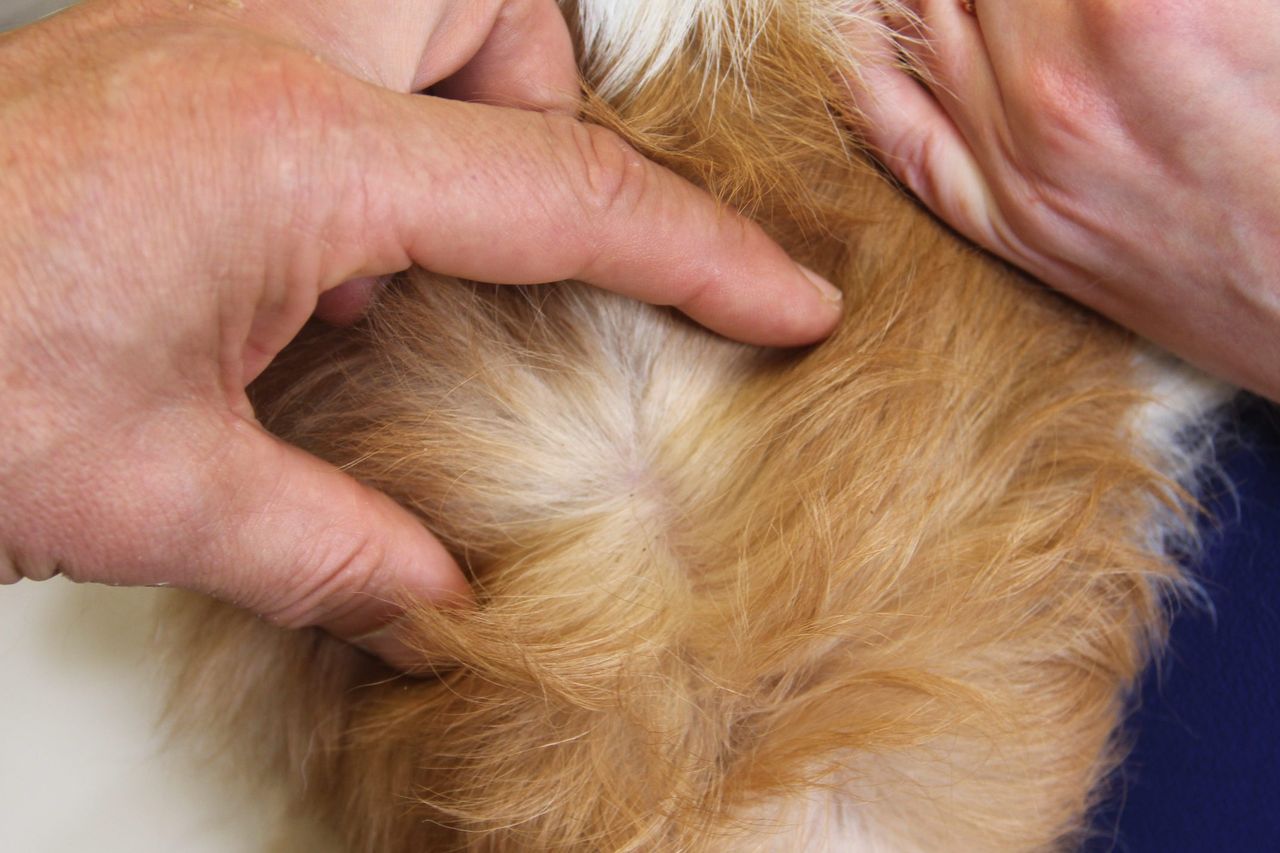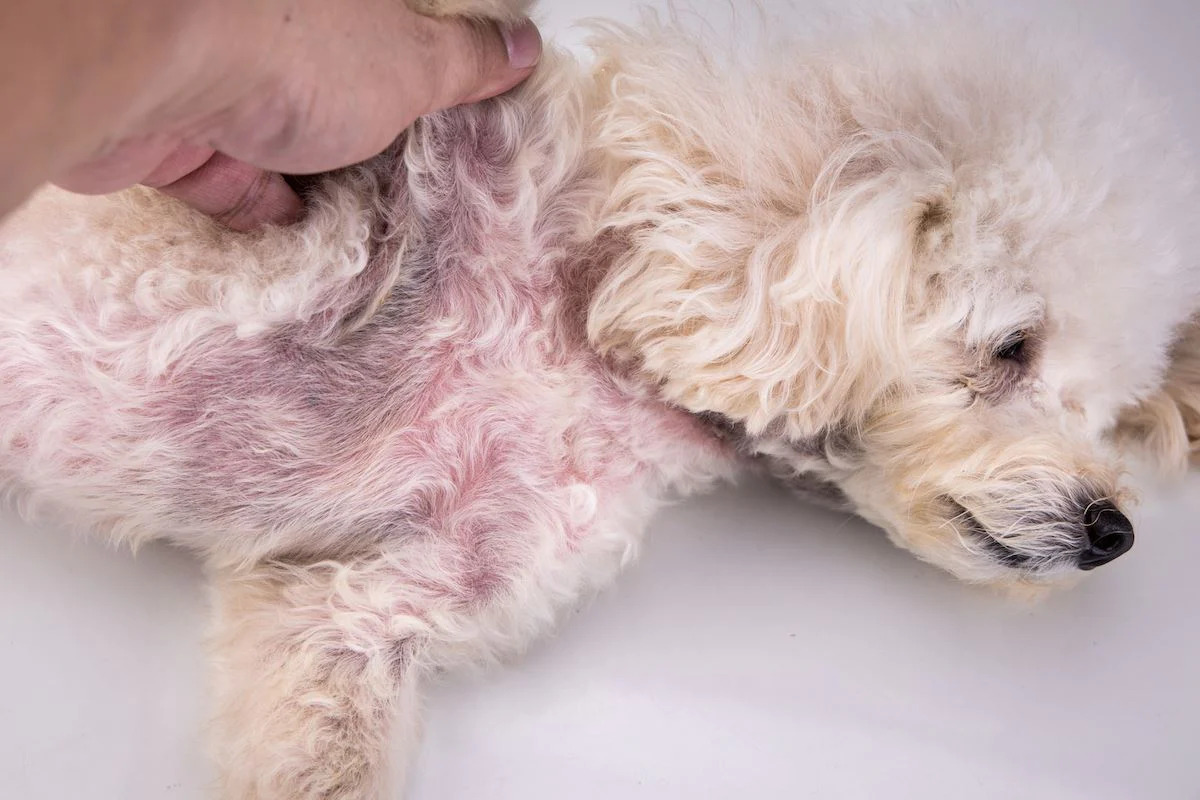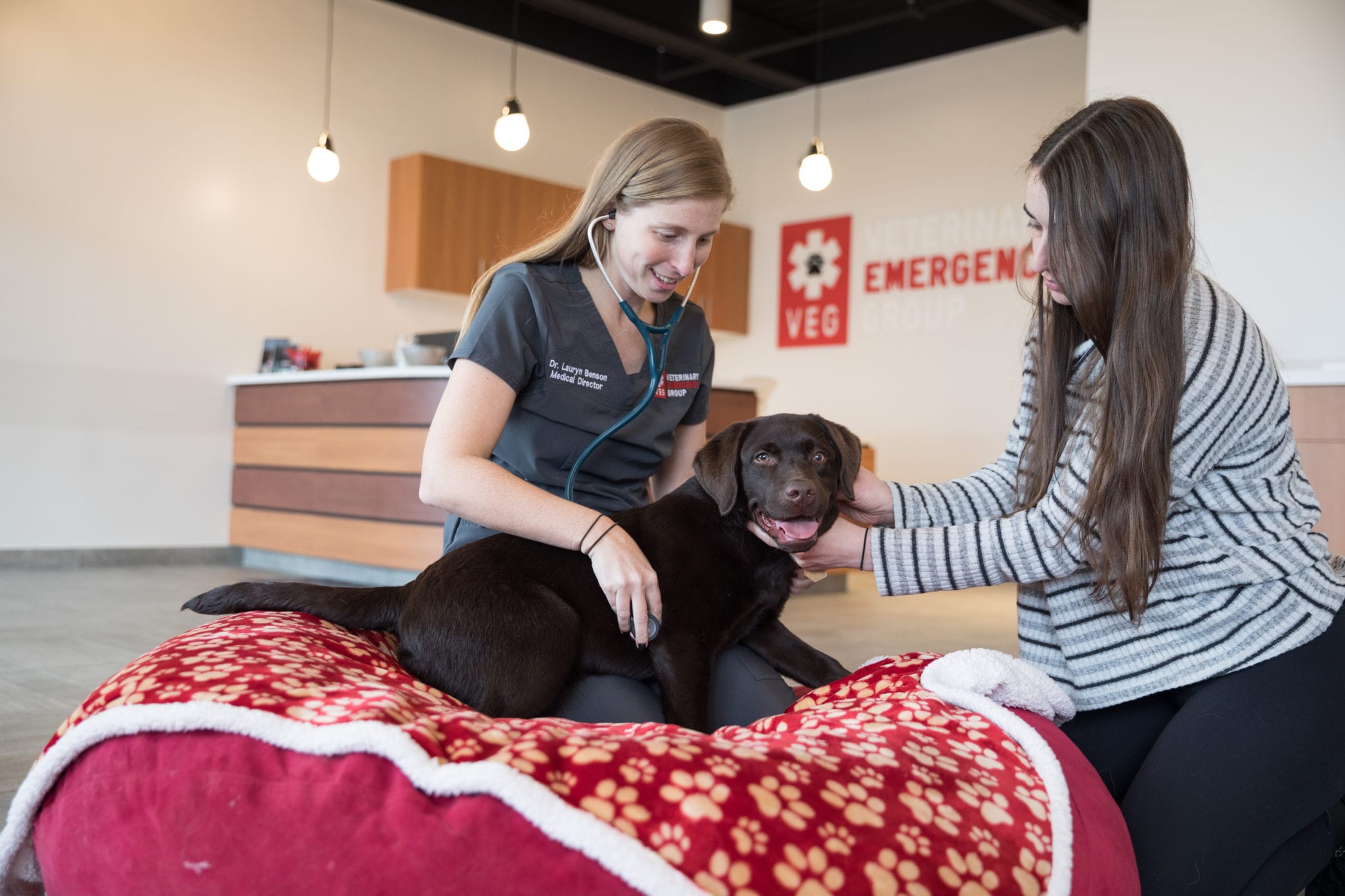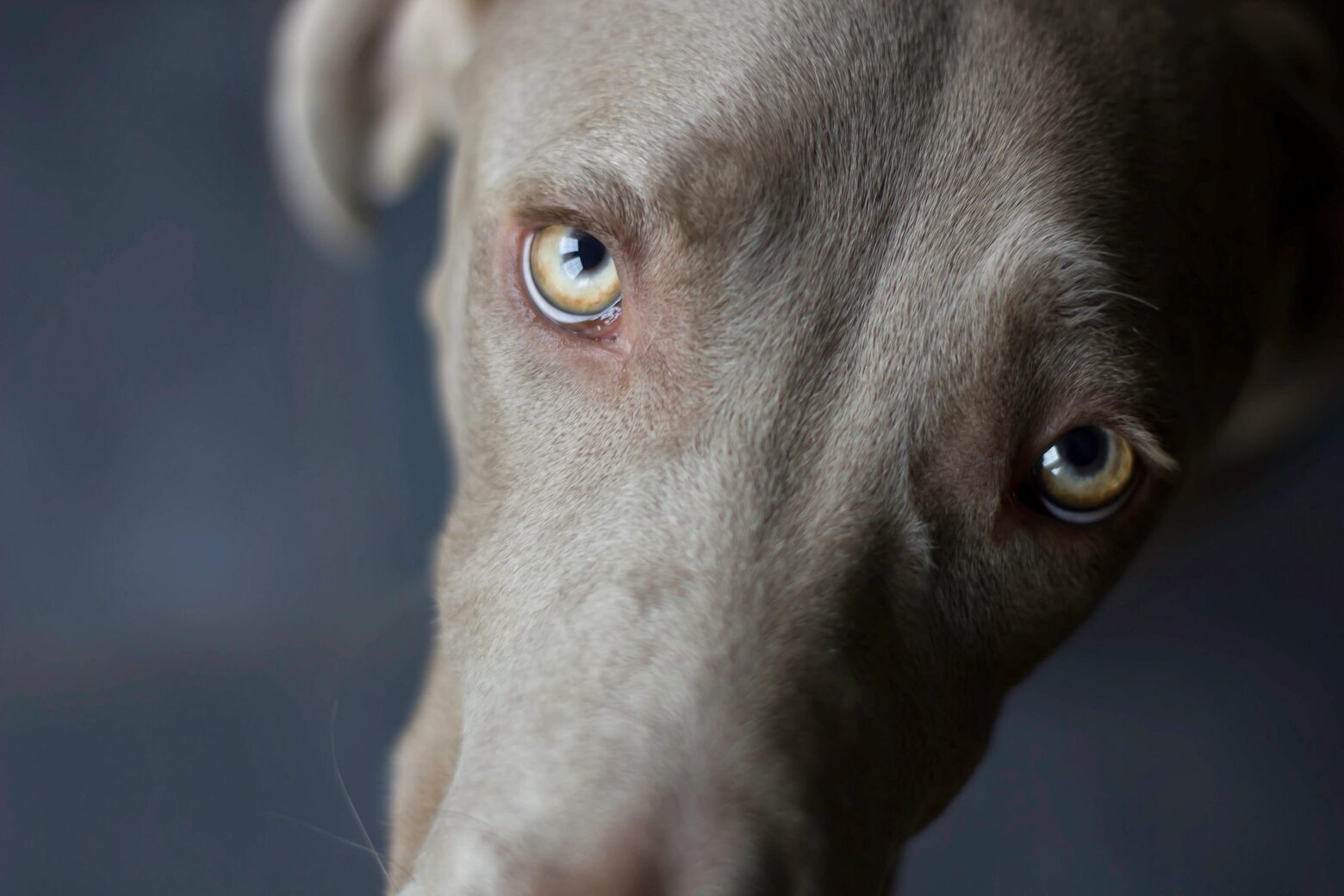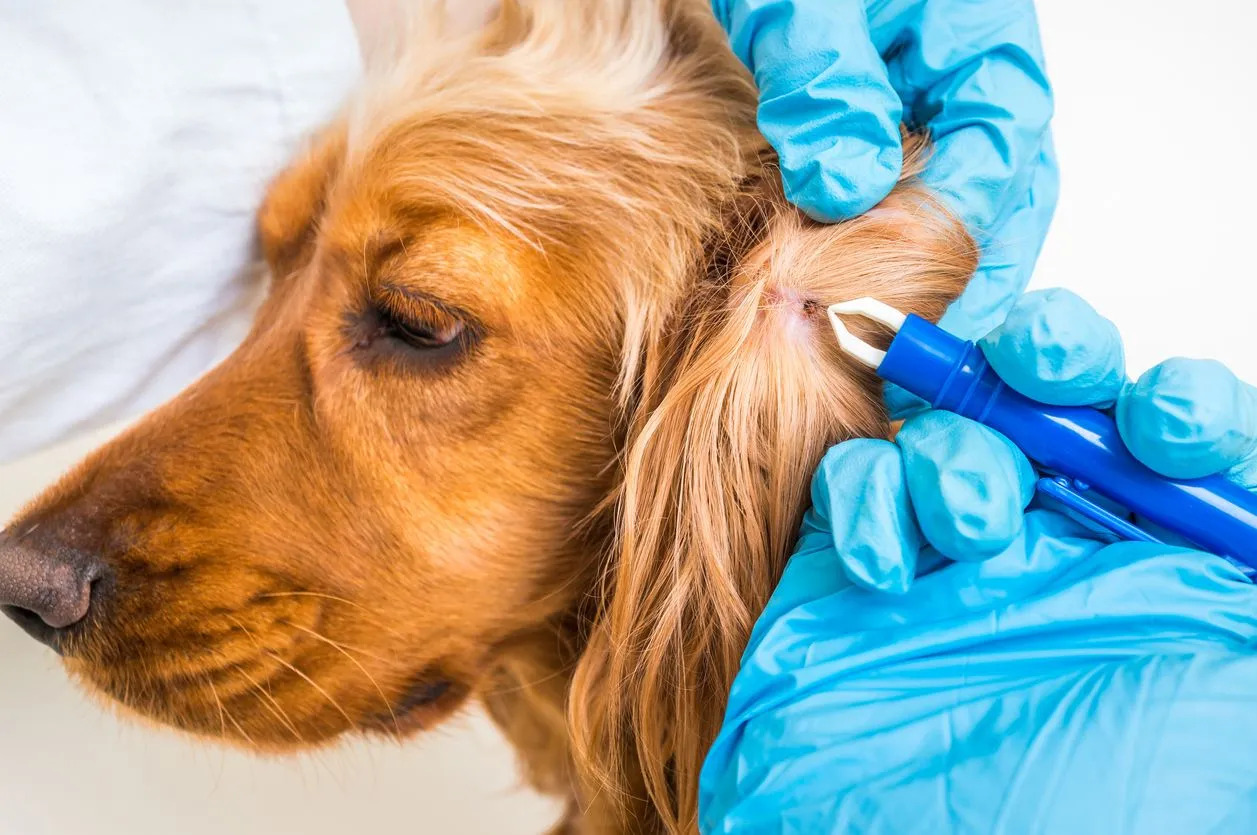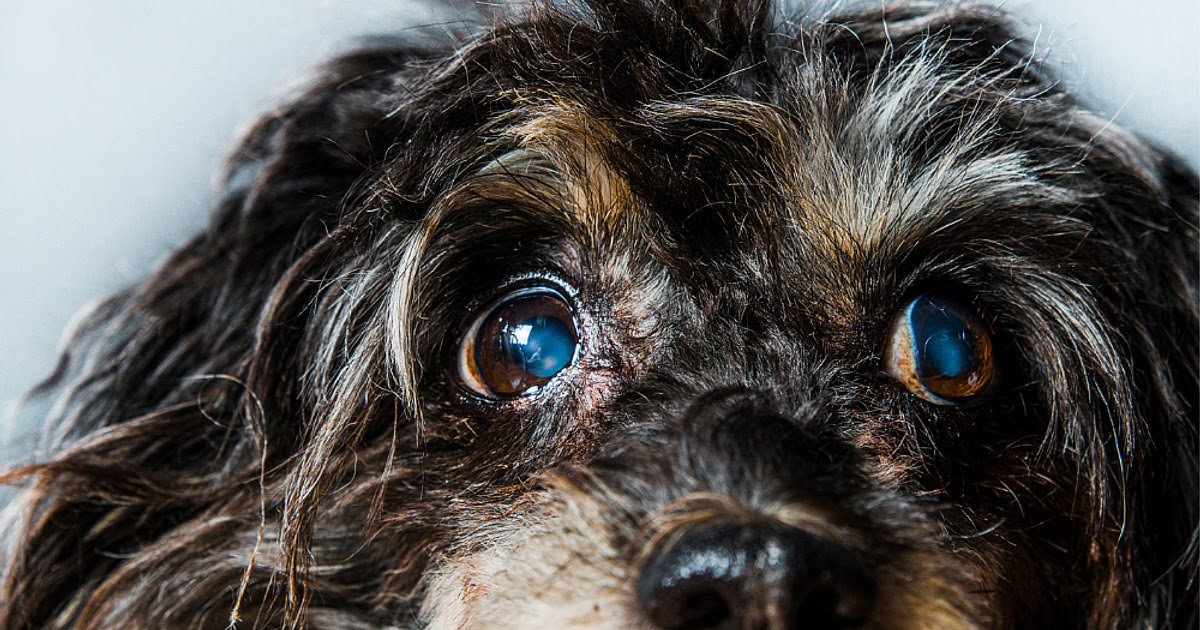Home>Health & Wellness>Common Health Issues>What Do Skin Allergies Look Like In Dogs Caused By An Allergic Reaction


Common Health Issues
What Do Skin Allergies Look Like In Dogs Caused By An Allergic Reaction
Published: January 26, 2024
Discover the signs of skin allergies in dogs caused by allergic reactions. Learn about common health issues and how to identify and manage them.
(Many of the links in this article redirect to a specific reviewed product. Your purchase of these products through affiliate links helps to generate commission for Pawsomeoldies.com, at no extra cost. Learn more)
Table of Contents
Introduction
Skin allergies in dogs are a common health issue that can cause discomfort and distress to our beloved furry companions. Just like humans, dogs can also suffer from allergic reactions that manifest on their skin. These allergies can be triggered by various factors, including environmental allergens, food ingredients, and even certain medications. As responsible pet owners, it's crucial to be aware of the signs and symptoms of skin allergies in dogs, as well as the available treatment options and preventive measures.
Understanding the underlying causes of skin allergies in dogs is essential for providing the best possible care and support for our canine friends. By recognizing the symptoms and knowing how to address allergic reactions, we can help alleviate their discomfort and improve their overall well-being. In this article, we will delve into the common causes, symptoms, identification methods, treatment options, and preventive measures for skin allergies in dogs. By gaining a comprehensive understanding of these aspects, we can ensure that our furry companions receive the care and attention they deserve when dealing with skin allergies.
Common Causes of Skin Allergies in Dogs
Skin allergies in dogs can be attributed to a variety of factors, ranging from environmental triggers to dietary components. Understanding these common causes is crucial for identifying and addressing allergic reactions in our canine companions. Here are the primary culprits behind skin allergies in dogs:
-
Environmental Allergens: Dogs can be sensitive to environmental allergens such as pollen, mold, dust mites, and grass. When these allergens come into contact with a dog's skin, they can trigger an allergic reaction, leading to symptoms like itching, redness, and inflammation.
-
Flea Allergy Dermatitis: Flea bites are a common source of irritation for dogs, particularly those with flea allergy dermatitis. Even a single flea bite can cause an allergic reaction, resulting in intense itching and discomfort for the affected dog.
-
Food Allergies: Certain food ingredients can provoke allergic reactions in dogs. Common allergens include beef, chicken, dairy, wheat, and soy. When a dog consumes these allergens, it can lead to skin issues such as itching, rashes, and hot spots.
-
Contact Allergens: Dogs may develop allergic reactions upon coming into contact with certain substances, such as certain types of plants, chemicals, or grooming products. These contact allergens can cause skin irritation and allergic dermatitis in sensitive dogs.
-
Medication Allergies: Some dogs may exhibit allergic reactions to certain medications, including antibiotics, topical treatments, or vaccines. These allergic responses can manifest as skin rashes, hives, or other dermatological symptoms.
-
Genetic Predisposition: Certain dog breeds are more prone to developing skin allergies due to genetic predisposition. Breeds such as Golden Retrievers, Boxers, Bulldogs, and Dalmatians are known to have a higher susceptibility to skin allergies.
By being aware of these common causes of skin allergies in dogs, pet owners can take proactive measures to minimize their pets' exposure to potential triggers. Additionally, understanding these causes can aid in the identification and management of allergic reactions, ultimately contributing to the overall well-being of our canine companions.
Symptoms of Skin Allergies in Dogs
Skin allergies in dogs can manifest through a range of symptoms, each of which can indicate an allergic reaction affecting the dog's skin and overall well-being. Recognizing these symptoms is crucial for timely intervention and effective management of the allergies. Here are the common symptoms of skin allergies in dogs:
-
Persistent Itching: One of the hallmark signs of skin allergies in dogs is persistent itching. Affected dogs may frequently scratch, bite, or lick their skin, particularly in areas such as the paws, ears, abdomen, and groin. The itching can be intense and may lead to skin damage and secondary infections.
-
Redness and Inflammation: Allergic reactions can cause the skin to become red, inflamed, and irritated. This can be observed as reddened patches, hot spots, or general skin discoloration. In some cases, the affected areas may feel warm to the touch due to inflammation.
-
Skin Rashes and Hives: Dogs with skin allergies may develop rashes, hives, or raised welts on their skin. These manifestations are indicative of an immune response to allergens and can contribute to the dog's discomfort and distress.
-
Hair Loss and Bald Patches: Allergic reactions can lead to hair loss in affected areas, resulting in bald patches or thinning of the coat. This can be a visible indicator of skin allergies and may contribute to the dog's overall appearance and grooming habits.
-
Ear Infections: Dogs prone to allergic reactions may experience recurrent ear infections, characterized by redness, discharge, odor, and discomfort. Ear infections can be a secondary consequence of skin allergies and may require specific attention and treatment.
-
Chronic Ear and Paw Licking: Excessive licking of the paws and ears can be a sign of skin allergies in dogs. This behavior is often a response to itching and discomfort, and it can lead to further skin irritation and potential secondary infections.
-
Scaly or Flaky Skin: Skin allergies can cause the skin to become dry, scaly, or flaky, particularly in areas prone to allergic reactions. This can contribute to the dog's discomfort and may lead to further skin issues if left unaddressed.
-
Secondary Skin Infections: Due to persistent itching and skin damage, dogs with skin allergies are susceptible to secondary skin infections caused by bacteria or yeast. These infections can exacerbate the existing allergic reactions and require targeted treatment.
By being attentive to these symptoms, pet owners can promptly seek veterinary care and implement appropriate measures to address the underlying skin allergies in their dogs. Early recognition of these symptoms can contribute to effective management and improved quality of life for affected dogs.
Identifying Allergic Reactions in Dogs
Identifying allergic reactions in dogs requires keen observation and an understanding of the potential triggers and symptoms associated with skin allergies. Pet owners play a crucial role in recognizing and addressing allergic reactions in their canine companions. Here are essential steps to identify allergic reactions in dogs:
1. Observation of Behavioral Changes:
- Pay attention to changes in your dog's behavior, such as increased scratching, licking, or biting at the skin. Excessive grooming or agitation can indicate discomfort related to allergic reactions.
Read more: What Does A Tick Look Like In Dog Skin
2. Skin Examination:
- Regularly inspect your dog's skin for any signs of redness, inflammation, rashes, or hot spots. Check for areas of hair loss, bald patches, or scaly skin, as these can be indicative of allergic skin conditions.
3. Monitoring Ear Health:
- Keep an eye on your dog's ears for signs of redness, discharge, odor, or excessive wax buildup. Recurrent ear infections can be linked to underlying skin allergies and should be promptly addressed.
4. Noting Environmental Triggers:
- Identify potential environmental allergens that your dog may come into contact with, such as pollen, grass, mold, or household chemicals. Note any seasonal patterns or specific environmental exposures that coincide with allergic reactions.
5. Dietary Assessment:
- Evaluate your dog's diet and consider the possibility of food allergies contributing to skin issues. Keep track of any changes in diet or the introduction of new food items that may coincide with allergic symptoms.
Read more: What Does Cancer On A Dog’s Skin Look Like
6. Veterinary Consultation:
- Seek professional guidance from a veterinarian to conduct a thorough examination and diagnostic tests to identify the specific allergens affecting your dog. Allergy testing and skin evaluations can provide valuable insights into the underlying causes of skin allergies.
7. Allergy Testing:
- Consider allergy testing, which may involve skin prick tests or blood tests to pinpoint specific allergens triggering reactions in your dog. This targeted approach can aid in developing effective management strategies.
8. Keeping a Symptom Log:
- Maintain a log of your dog's allergic symptoms, including the frequency and severity of itching, skin changes, and other related issues. This can help track patterns and provide valuable information for veterinary consultations.
By actively engaging in the identification of allergic reactions in dogs, pet owners can collaborate with veterinarians to develop tailored treatment plans and preventive measures. Early recognition and intervention are key to managing skin allergies and promoting the well-being of our canine companions.
Treatment Options for Skin Allergies in Dogs
Addressing skin allergies in dogs often requires a multifaceted approach aimed at alleviating symptoms, managing allergic reactions, and improving the overall comfort of affected pets. Here are the primary treatment options for skin allergies in dogs:
-
Allergen Avoidance: Identifying and minimizing exposure to specific allergens, such as pollen, dust mites, or certain food ingredients, can help reduce the frequency and severity of allergic reactions in dogs. This may involve making environmental modifications, such as using air purifiers or hypoallergenic bedding, and implementing dietary changes to eliminate potential food allergens.
-
Medication: Veterinarians may prescribe medications to manage the symptoms of skin allergies in dogs. These may include antihistamines to alleviate itching, corticosteroids to reduce inflammation, and topical treatments to soothe irritated skin. Additionally, antibiotics or antifungal medications may be necessary to address secondary skin infections resulting from allergic reactions.
-
Immunotherapy: Allergy shots, or immunotherapy, can be recommended for dogs with persistent or severe skin allergies. This treatment involves administering gradually increasing doses of specific allergens to desensitize the dog's immune system over time. Immunotherapy aims to reduce the dog's sensitivity to allergens and minimize allergic reactions.
-
Flea Control: For dogs with flea allergy dermatitis, rigorous flea control measures are essential. This may involve using flea preventatives, such as topical treatments or oral medications, and implementing environmental flea control strategies to minimize the risk of flea infestations and subsequent allergic responses.
-
Specialized Diets: Dogs with confirmed food allergies may benefit from specialized hypoallergenic diets. These diets are formulated to exclude common food allergens and provide essential nutrients to support skin health. Transitioning to a hypoallergenic diet under veterinary guidance can help manage food-related skin allergies.
-
Topical Therapies: Shampoos, sprays, and topical treatments designed to soothe and protect the skin can be beneficial for dogs with allergic skin conditions. Oatmeal-based shampoos, medicated sprays, and emollient creams can help alleviate itching, reduce inflammation, and promote skin hydration.
-
Nutritional Supplements: Omega-3 fatty acids and other skin-supporting supplements may be recommended to improve skin barrier function and reduce inflammation in dogs with skin allergies. These supplements can contribute to overall skin health and help manage allergic skin conditions.
-
Regular Monitoring and Follow-Up: Continuous monitoring of the dog's skin condition, response to treatment, and overall well-being is essential. Follow-up appointments with the veterinarian allow for adjustments to the treatment plan and ensure that the dog's skin allergies are effectively managed.
By employing these treatment options in a comprehensive and tailored manner, pet owners can work in collaboration with veterinarians to address skin allergies in dogs and enhance the quality of life for their canine companions. Each dog's treatment plan may vary based on the specific allergens involved, the severity of symptoms, and individual response to therapy. It is important to seek professional guidance and adhere to the prescribed treatment regimen to effectively manage skin allergies in dogs.
Read more: What Do Parasite Eggs Look Like In Dog Poop?
Preventing Skin Allergies in Dogs
Preventing skin allergies in dogs involves proactive measures aimed at minimizing potential triggers and promoting overall skin health. By implementing preventive strategies, pet owners can reduce the risk of allergic reactions and contribute to their dogs' well-being. Here are essential steps to prevent skin allergies in dogs:
-
Allergen Management: Identify and minimize exposure to common environmental allergens, such as pollen, mold, and dust mites. Regular cleaning of living spaces, using air purifiers, and keeping outdoor activities to a minimum during high pollen seasons can help reduce allergen exposure.
-
Flea Control: Implement rigorous flea control measures to prevent flea infestations and flea allergy dermatitis. Use veterinarian-recommended flea preventatives and regularly groom and inspect your dog for signs of fleas.
-
Balanced Diet: Provide a well-balanced and high-quality diet for your dog, avoiding common food allergens such as beef, chicken, dairy, and wheat. Opt for premium commercial diets or hypoallergenic formulations under veterinary guidance.
-
Regular Grooming: Maintain regular grooming practices, including bathing with gentle, hypoallergenic shampoos and brushing to remove loose hair and potential allergens from the coat. Pay special attention to ear cleaning and hygiene to minimize the risk of ear infections.
-
Environmental Modifications: Create an environment that supports your dog's skin health, such as using hypoallergenic bedding, minimizing exposure to strong chemicals or fragrances, and ensuring adequate ventilation in living spaces.
-
Routine Veterinary Care: Schedule regular veterinary check-ups to monitor your dog's overall health and address any emerging skin issues promptly. Discuss preventive measures and potential allergen exposures with your veterinarian during wellness visits.
-
Allergy Testing: Consider allergy testing for your dog, especially if they have a history of skin allergies or are prone to allergic reactions. Identifying specific allergens can guide targeted preventive strategies and allergen avoidance.
-
Supplemental Support: Incorporate skin-supporting supplements, such as omega-3 fatty acids, into your dog's diet under veterinary guidance. These supplements can help maintain skin barrier function and reduce inflammation, potentially lowering the risk of allergic skin conditions.
By integrating these preventive measures into your dog's care routine, you can take proactive steps to minimize the likelihood of skin allergies and promote optimal skin health. Each dog's preventive plan may vary based on individual sensitivities and environmental factors, so it's essential to tailor these strategies to your dog's specific needs. With a proactive approach to skin allergy prevention, pet owners can contribute to their dogs' comfort and well-being, fostering a healthy and vibrant life for their beloved canine companions.
Conclusion
In conclusion, skin allergies in dogs can significantly impact their quality of life, leading to discomfort, itching, and potential complications if left unaddressed. By understanding the common causes, symptoms, identification methods, treatment options, and preventive measures for skin allergies, pet owners can play a proactive role in supporting the well-being of their canine companions.
Recognizing the diverse array of triggers, from environmental allergens to food sensitivities, empowers pet owners to take targeted steps in minimizing their dogs' exposure to potential allergens. Additionally, being vigilant in identifying symptoms such as persistent itching, redness, and ear infections can prompt timely veterinary intervention, leading to effective management of allergic reactions.
Treatment options, including allergen avoidance, medication, immunotherapy, and specialized diets, offer multifaceted approaches to alleviate symptoms and address the underlying causes of skin allergies in dogs. Moreover, preventive measures such as allergen management, flea control, balanced diets, and routine grooming can significantly reduce the risk of allergic reactions, promoting long-term skin health for dogs.
By actively engaging in the prevention, identification, and management of skin allergies, pet owners can foster a supportive and nurturing environment for their canine companions. Collaboration with veterinarians, regular monitoring, and adherence to prescribed treatment regimens are pivotal in ensuring the well-being of dogs affected by skin allergies.
Ultimately, the bond between pet owners and their dogs is strengthened through attentive care and a deep understanding of their unique needs. By prioritizing skin health and proactively addressing allergic reactions, pet owners can provide their dogs with the comfort, vitality, and joy they deserve, fostering a fulfilling and vibrant life for their beloved furry friends.
